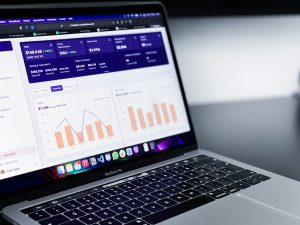12.5. Decision Support Systems
A decision support system (DSS) helps managers make decisions using interactive computer models that describe real-world processes. These systems are designed to take inputs regarding a known (or partially-known) decision making process and provide the information necessary to make a decision. The DSS uses data from the internal database but looks for specific data that relate to the problems at hand. DSSs generally assist a management level person in the decision-making process. It is a tool for answering “what if” questions about what would happen if the manager made certain changes. With models, the manager enters into the computer the values that describe a particular situation, and the program computes the results. A DSS can be looked at as a tool for competitive advantage because it can give an organization a mechanism to make wise decisions about products and innovations.
DSS’s can come in many different formats. A nicely designed spreadsheet that allows for input of specific variables and then calculates required outputs could be considered a DSS. A manager could create a spreadsheet to show the amount of overtime required if the number of workers increases or decreases. Another DSS might be one that assists in determining which products a company should develop. Input into the system could include market research on the product, competitor information, and product development costs. The system would then analyze these inputs based on the specific rules and concepts programmed into it. The system would report its results with recommendations and/or key indicators to be used in making a decision. Companies can use a predictive analytics program to improve their inventory management system and use big data to target customer segments for new products and line extensions.
Common DSS Analysis Techniques
The following are common analysis techniques in a decision support system.
| What if analysis | Outlines the impact of a change in a variable or assumption on the model. |
| Sensitivity Analysis | Outlines the impact when one variable is changed repeatedly. |
| Goal Seek Analysis | Goal seeking analysis-finds the inputs necessary to achieve a goal |
| Optimization Analysis | Optimization analysis -finds the optimum value for a target variable by repeatedly changing other variables |
Executive Information Systems
Although similar to a DSS, an executive information system (EIS) is customized for executives. These systems provide specific information for strategic decisions. For example, a CEO’s EIS may include special spreadsheets that present financial data comparing the company to its principal competitors and graphs showing current economic and industry trends.
Most EIS’s have a business intelligence (BI) dashboard. A BI dashboard is a tool that shows all of an organization’s key metrics and performance indicators on one screen. This makes it easy for management to quickly see how the company is performing and address any outliers or negative trends while also being able to identify positive trends. It also provides a consolidated overview with the ability to drill down or filter when needed. During the COVID pandemic many dashboards were created to track the virus as well as vaccine rates. One example is the GIS Hub provided by Esri Canada that shares all information about the pandemic.

Expert Systems
An expert system gives managers advice similar to what they would get from a human consultant. Artificial intelligence enables computers to reason and learn to solve problems in much the same way humans do, using what-if reasoning. Although they are expensive and difficult to create, expert systems are finding their way into more companies as more applications are found. Lower-end expert systems can even run on mobile devices. Top-of-the-line systems help airlines appropriately deploy aircraft and crews, critical to the carriers’ efficient operations. The cost of hiring enough people to do these ongoing analytical tasks would be prohibitively expensive. Expert systems have also been used to help explore for oil, schedule employee work shifts, and diagnose illnesses. Some expert systems take the place of human experts, whereas others assist them. For more information on expert systems see Chapter 13.
“13.3 Management Information Systems ” from Introduction to Business by Lawrence J. Gitman, Carl McDaniel, Amit Shah, Monique Reece Linda Koffel, Bethann Talsma, James C. Hyatt, Open Stax is licensed under Creative Commons Attribution 4.0 License
“Chapter 7: Does IT Matter?” from Information Systems for Business and Beyond (2019) by David Bourgeois is licensed under a Creative Commons Attribution-NonCommercial 4.0 International License, except where otherwise noted.

